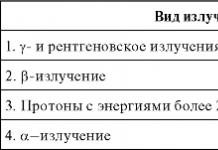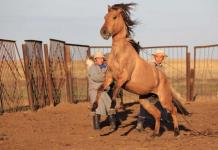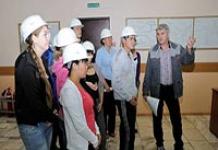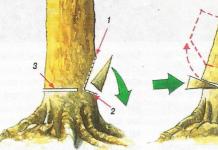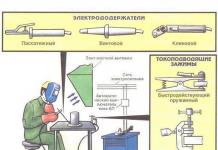Cyperuses, they are also sitovniks, are perennial grasses of the Osokov family. They come from the African continent, where they grow along various bodies of water and in swampy places. Caring for cyperus at home is not particularly difficult, even a novice florist can cope with its cultivation without any problems.
According to popular beliefs, tsiperus not only decorates the home, but also has a positive energy that protects the owner from troubles of all sorts. In feng shui, this flower is represented as a kind of guardian of the house.
This teaching attributes to him the ability to protect household members from lies, deceit, and bad intentions. Cyperus can also relieve depression and improve the mood of everyone around. This plant is recommended to grow in families where they often use foul language, lie and love to gossip.
Cyperus will also help with sleep disorders. If you cannot sleep for a long time, you do not get enough sleep, then you should definitely place a flowerpot with this plant in the bedroom. It is also believed that this culture can develop a desire for new knowledge and facilitate learning. Therefore, if children have learning problems in their room, you can put cyperus. From a biological point of view, cyperus has the ability to cleanse the air from all kinds of pollution.
Cyperus: growing and care (video)
Description of species and varieties of cyperus
Tsiperus is a perennial moisture-loving plant. It is characterized by straight herbaceous stems with closely spaced internodes and sessile linear leaves. Under natural conditions, it forms extensive thickets in swampy and humid places. In ancient times, various mats were woven from cyperus and boats were built, and essential oil was made from its roots. Its height in nature can be over 1.5 meters.
Gallery: cyperus (25 photos)
























Cyperus alternate-leaved
Cyperus is alternate-leaved, it is also marsh - a large perennial crop with narrow leaves collected in whorls at the tops of the petioles. Under room culture conditions, the height of adult plants does not exceed 1 meter. It is not very demanding in terms of temperature, but it needs an increased level of humidity.

Cyperus alternate-leaved
Cyperus papyrus
Cyperus papyrus, also known as papyrus papyrus, is a perennial plant from the marshlands of Egypt and Ethiopia. Under natural conditions, its height can be up to 3 meters. The stems are straight and very strong. They end in a lush rosette of long hanging leaves. The decorative qualities of the plant are very high.

Cyperus papyrus
Cyperus umbrella
Umbellifera cyperus is a perennial plant native to Madagascar. Its height is 1.5-1.7 meters. It is characterized by straight, slightly rounded stems and a dense umbrella-shaped crown. There is also a variegated form of this species with a white stripe on the leaves.

Cyperus umbrella
Cyperus sprawling
Spreading Cyperus is a widespread tropical plant with few stems. Its average height does not exceed 1 meter. It differs from other species in wider and longer basal leaves.

Cyperus sprawling
Cyperus wrapped, graceful and white stripe
Cyperus wrapped- a perennial plant with bare stems about 1 meter high. The tops of the stems of this species are crowned with a thick head of hanging leaves. Cyperus the graceful- the shortest species with a height of no more than 30 cm. White-striped cyperus - a species with wide white stripes on leaf plates.
Among the species diversity of Cyperus, you can also find completely aquatic species. For example, Cyperus Helfer. At home, it is used as an aquarium plant to create a background.

Cyperus Helfer
Features of caring for cyperus at home
Cyperus is very easy to grow and absolutely not demanding culture. The most important thing for this plant is constantly moist soil. ... In the summer, it is even recommended to put the pot with it in the water up to half the height. Also, the plant really likes it if the flowerpot with it is placed on a constantly damp tray. In winter, cyperus is quite simple to water abundantly and often.
Lighting
The intensity of illumination for Cyperus is not as important as the length of daylight hours. When short winter days come, it must be supplemented with fluorescent or special phyto lamps. NS When choosing a place to place a plant, preference should be given to the east or west orientation. Direct sunlight is harmful to sensitive cyperus leaves.

The intensity of illumination for cyperus is not as important as the length of daylight hours.
Priming
The soil for growing cyperus consists of 3 parts of sod soil, 1 part of humus, 1 part of leafy soil and 1 part of clean river sand. If there is no opportunity for preparing an earthen mixture, you can use a mixture of ready-made soil for growing palm trees and sand, taken in a 1: 1 ratio. The main requirement for the soil is a slightly acidic or neutral reaction.
Temperature
Cyperus does not have special requirements for temperature conditions. The optimum temperature for growing it is + 24-26 ° C. The plant can overwinter at lower temperatures., but at the same time it is imperative to reduce the intensity of watering.

Cyperus does not have special requirements for temperature conditions
Top dressing
During the period of intensive growth, adult specimens Cyperus is fed once a month with complex mineral fertilizers for indoor plants. They should be diluted at half the recommended concentration. When choosing fertilizers for young, intensively developing plants, preference should be given to phosphorus-potassium complexes.
Transfer
Young Cyperuses need to be transplanted annually into larger containers. Adult, already formed flowers roll over as they grow. Usually once every 2-3 years is enough.
With proper care, cyperus forms a lot of leaves, and when spring comes, it blooms with small greenish flowers located at the top of the umbrellas.
How to transplant cyperus (video)
The benefits and harms of Cyperus
When growing cyperus at home, you should definitely know about its beneficial and harmful properties. The main benefit of this plant is the efficient humidification of dry air in apartments with central heating. In addition, a well-developed adult specimen of Cyperus pleases the eye with a natural green color. Like all plants, this crop significantly improves the composition of the air. During breathing, cyperus absorbs carbon dioxide and gives off oxygen.
No harmful properties were found in this plant. The only exception is allergic reactions in people predisposed to this.

Like all plants, Cyperus significantly improves the composition of the air.
Reproduction of cyperus at home
Cyperus can be propagated at home both by seed and vegetative way.
Vegetative propagation
There are the following methods of vegetative propagation of this culture:
- Division of the bush. This breeding method is only suitable for highly overgrown specimens. Division is best combined with a spring transplant. If the conditions are met, young plants move very quickly to the east and usually turn into well-developed bushes by autumn.
- Rooting outlets... For this method, whole leaf rosettes are used, which are carefully cut off with part of the stem. The resulting planting material is planted in a loose and fertile substrate and covered with a plastic bag. This will create a greenhouse effect and speed up the rooting process. The bottom heating can also be used for faster root formation. Rooting sockets can also be done in the aquatic environment. To do this, they are placed in a container with boiled water, on the bottom of which a piece of charcoal is placed. After the roots appear, the rosettes are planted in the soil.
- Rooting of apical cuttings. Cutting of cyperus is best done in the spring. Before planting, the leaves of the cuttings must be shortened by a third. They can be rooted both in soil and in water.

Cyperus, sat, venus grass or sitovnik is a herbaceous plant of the sedge family. Under natural conditions, it grows in swampy areas and along the banks of rivers and lakes, where it forms dense thickets. The native land of Cyperus is the tropical part of the African continent and the island of Madagascar. The flower is unpretentious in its content, so the reproduction of cyperus and caring for it at home does not cause difficulties.
Botanical description
The first specimens of Cyperus were brought to Western Europe at the end of the 18th century. The flower has become very popular due to its exotic appearance.
Cyperus is a perennial plant with long, straight stems, in the upper part of the shoot there is an umbrella of thin linear leaves collected in a rosette. Peduncles are long, triangular in shape, are highly durable. This allows them not to break under the gusts of wind. The color of the sheet plates can be varied: from light green to brown, yellow or white.
The flowering period lasts all summer. The flowers are small, yellowish-white or greenish, collected in rosette inflorescences or are arranged singly. After flowering, nuts are formed in their place.
The root system of cyperus is strong and long, but located shallow from the soil surface. Some varieties may have spindle-shaped roots that provide the plant with nutrients and moisture. In other species, the root may be short.
Variety of species
Cyperus is widespread in indoor floriculture. The most common types of flowers are:
Plant care does not depend on the season. It develops well at any time of the year. The flower requires bright diffused lighting. The best option for placing a cyperus is east or west windows. When placing pots on the south side, care should be taken to protect from direct sunlight at noon.
In winter, when there is a lack of lighting, it is necessary to provide additional lighting with fluorescent lamps. With a lack of light, the cyperus does not lose its decorative qualities, but its growth stops.
A flower requires a lot of moisture. In order for it to grow and develop normally, its root system must be constantly moisturized. To do this, the pot is placed in a deep tray filled with water, while the water should slightly cover the pot.
The soil for the flower should be non-acidic and contain peat, river sand, sod and leafy soil and humus. The sand will give the soil the necessary looseness and porosity and will help to better pass moisture and air.
The plant will require a large, spacious pot since the root system is close to the soil surface. One quarter of the pot's volume should be filled with crushed stone or expanded clay drainage. Tsiperus is transplanted using the transshipment method while preserving the old earthen coma. Rotten and old roots should be removed before planting. The soil around the flower should be tamped and watered abundantly.
For planting, soil is poured into the bottom of the container, and then a thick layer of sand, which will prevent the erosion of the fertile layer. After that, the pot with the plant is placed at the bottom of the reservoir.
Plant feeding is carried out throughout the year. It is combined with watering. For cyperus, you can use complex mineral fertilizers. Top dressing is applied once every 15-20 days. In winter, it is fed once a month.
Plant cyperus (Latin Cyperus), or to feed, or sitovnik- a numerous (about 600 species) genus of herbaceous perennials of the Sedge family, growing naturally in tropical and subtropical regions of the Earth on the banks of rivers and reservoirs, but most often Cyperus flowers are found in Africa. In our country, such relatives of the cyperus are known as sedge, reeds and white-fed. The cyperus flower is somewhat similar to a dill umbrella or a small herbaceous palm. This is not to say that this representative of sedges is so attractive, but if it grows as a dense island on the shore of a pond, it looks spectacular.
In ancient times, one of the endangered species of this genus was used for the production of writing material - papyrus, which is why it is called "cyperus papyrus". Tsiperus is not of much interest to branded flower shops, but in the market for grandmothers "palm tree ciperus" is the same hot commodity as Saintpaulia.
Listen to the article
Planting and caring for cyperus
- Bloom: grown as an ornamental deciduous plant.
- Lighting: bright diffused light, partial shade (east or west windowsill).
- Temperature: in summer - usual for residential premises, in winter - at least 12 ˚C.
- Watering: frequent and abundant.
- Air humidity: very high. Continuous spraying of the leaves and keeping the plant on a pallet of wet pebbles is recommended.
- Top dressing: complex fertilizer for ornamental deciduous plants: in the warm season - twice a month, in winter - once.
- Rest period: not visible.
- Transfer: as needed at any time of the year.
- Reproduction: seeds, dividing the bush, apical cuttings and rosettes.
- Pests: spider mites, aphids.
- Diseases: does not get sick, but due to insufficient humidity it can turn yellow and lose its decorative effect.
Read more about growing cyperus below.
Domestic cyperus - description
Tsiperus in natural conditions grows up to three meters in height. Its stems are erect, triangular, on their top there are umbrella-shaped whorls of long leaves of different shades of green, although there are variegated varieties in the culture. Small flowers are unattractive, they hide in the axils of the leaves. The home cyperus plant is unpretentious, shade-tolerant, it is grown to decorate shaded areas of a room or small artificial reservoirs.

Cyperus home care
How to care for cyperus
Even a novice florist can grow the houseplant cyperus. Cyperus care consists of properly organized watering and timely balanced feeding of the plant. But first, let's determine where is the best place to place the plant.
Despite its shade tolerance, the indoor cyperus flower, like its wild relatives, loves bright diffused light and can even withstand direct sunlight for some time, so if you do not have any special plans for cyperus, place it on the western or eastern windowsill. Or in the south, but then you have to shade it in the summer from the scorching midday sun.
In summer, indoor cyperus normally withstands the usual temperature for a home at this time, but it needs a constant flow of fresh air, and even better - summer vacations in nature. In winter, Cyperus prefers coolness, but the temperature in the room where Cyperus is located should not be lower than 12 ºC.

The plant loves moisture very much, and it is not for nothing that some growers grow cyperus in an aquarium. It is better to keep an excessively moisture-loving cyperus at home on a tray with wet pebbles (expanded clay) or in a flowerpot with water, sprinkling the soil in a pot with a plant with a layer of sand. Watering is needed abundant and frequent so that the soil in the pot is moist all the time. Watering is reduced only for winter, when the cyperus is transferred to a cool room.
Cyperus leaves need high air humidity, so do not forget to spray and wash them with settled water. In winter, spraying can be stopped, but keep Cyperus away from heaters.
Fertilizing cyperus
Cyperus does not have a rest period, it grows all year round, so it needs feeding all the time. In the spring-summer period, cyperus is fed every two weeks with a complex fertilizer for decorative deciduous plants. In winter, one top dressing per month is enough.
Cyperus transplant
How to plant cyperus or transplant it into a new pot? Since the flowering of cyperus is not of interest, and it does not need rest, it can be transplanted at any time, but it is better to do it all the same in March, provided that the roots are already really cramped in the pot. Most suitable for cyperus is a slightly acidic soil, nutritious, consisting of humus and peat bog soil in equal parts, preferably with the addition of a small amount of bog silt. A cyperus pot needs a tall one, filled with a quarter of drainage material.
The cyperus is planted by transferring the root ball into a new pot together with the soil adhering to it, then you need to gradually add the soil until the pot is full.

Reproduction of cyperus
If you are interested in how to grow cyperus at home, you should know that it reproduces by seeds, leaf rosettes, apical cuttings and dividing the bush, and the reproduction of cyperus papyrus occurs only by dividing the bush and using the seed method.
Propagation of cyperus by seeds
So how to propagate cyperus by seed? Growing Cyperus from seed requires long daylight hours, so it is best to sow Cyperus when the nights are short. Sowing seeds is carried out in bowls with a mixture of peat and leafy soil, one part of each and half of the sand. It is better not to close the cyperus seeds, but to press them tightly to the ground, and then cover the bowls with glass. The temperature for successful germination should be 18 ºC, the water for daily moistening of the soil should be warm. Be sure to ventilate crops and remove condensation from glass.
When the seedlings appear and get stronger, they are dived into pots with a diameter of 9 cm, three seedlings into one, the optimal composition of the soil: one part of turf and peat land and half a part of sand. Once the cyperus from the seed takes root, care for it as if it were an adult plant. Let me remind you that with seed propagation, the varietal properties of cyperus (for example, the variegation of leaves) may not be preserved.
Vegetative methods of reproduction of cyperus
Division of the cyperus bush: when transplanting a plant over two years old, divide the bush into several parts and plant them in different pots. Cyperus recovers very quickly.
Reproduction of cyperus rosettes: the leaf rosette is cut with a part of the stem about 5 cm long and planted in the sand, providing the bottom heating to 20-24 ºC. Or tilt the stem, lowering the leaf rosette into a container of water, and fix the cuttings in this position until the roots grow back; then the socket is cut off and planted in the ground.
Propagation of cyperus by apical cuttings: cuttings are cut in the spring, the leaves on them are shortened by two-thirds and the cuttings are placed in the water for growing roots. When the roots appear, the cuttings are planted in pots with a diameter of 7 cm.

Pests and diseases of cyperus
Cyperus insect pests
Cyperus is a plant that is resistant to both diseases and pests, but if you are negligent in care, it can be affected by aphids and spider mites. It is easier to prevent trouble than to get rid of it for weeks later, so do not forget to monitor the condition of the soil near the cyperus and maintain the air humidity at the required level.

Cyperus dries
When the tips of the leaves dry on the cyperus, this is a signal that the plant suffers from dry air, and until the plant dies, take action immediately: spray the leaves with settled water, put the cyperus pot in a pot of water or on a tray with wet expanded clay, and most importantly, keep it away from working radiators.

Cyperus turns yellow
This is usually due to dryness in the roots. You are not watering Cyperus enough. Correct your mistake and do not repeat it from now on, because the color lost by the leaves is not restored, and the yellow leaves must be cut with stems right at the root.
The genus Cyperus, belonging to the sedge family, has more than 600 species. The homeland of these plants is considered the island of Madagascar and the tropical part of Africa. Under natural conditions, cyperus grows on the banks of rivers, swamps and lakes in proximity and contact with water, forming whole thickets.
General information
Once in Europe in the 18th century, it quickly gained popularity due to its unpretentiousness and unique graceful appearance. Cyperus is also known under the names feed, venus grass and alternate-leaved sedge.
Cyperuses are perennial evergreen herbaceous plants with erect triangular reed-like stems. The top of each stem is crowned with an umbellate whorl, consisting of sessile linear leaves. Depending on the type of plant, the leaves can be light green, dark green, or even two-colored.
These moisture-loving plants are widely used to decorate and decorate fountains, aquariums, artificial waterfalls, water conservatories. In indoor culture, cyperus is able to decorate any green area and give it a tropical look.
Since cyperus grows practically in water, it evaporates a lot of moisture, saturating its air, which has a beneficial effect on neighboring plants.

Types and varieties of cyperus
Despite the huge number of cyperus species, only a few of them are bred at home and in greenhouses.
or Papyrus (Cyperus papyrus L.) is one of the most ancient species. It is known for the fact that papyrus was made from it in Ancient Egypt, as well as baskets and mats were woven, and even boats were built.
This cyperus is widespread in the wild in the swamps of Ethiopia and Egypt. At home, it is not grown due to its large size - the plant reaches a height of up to 3 meters.
In culture, it is found in greenhouses. The stem of the papyrus is erect and strong, ending in a dense whorl of long, hanging leaves. From the axils of the leaves, multi-flowered inflorescences appear on thin pedicels.

or alternate-leaved (C. alternifolius L.) - is the most common cultivation. This species is widespread along the swampy river banks on the island of Madagascar.
The plant is perennial, herbaceous, up to 1.7 meters high. The stem of this cyperus is also erect, and at the top it has an umbrella-shaped crown. The leaves are narrow, linear, hanging, having a length of up to 25 cm and a width of 0.5-1 cm. Flowers, collected in small panicles, appear in the leaf axils.

There are garden varieties of this cyperus:
"Gracilis" - differs in its compactness and narrower leaves;
"Variegatus" - has leaves and stems white or mottled with white stripes.
(C. diffusus Vahl.) - a plant up to 90 cm high, with numerous basal long and wide leaves. In the upper part, the leaves are narrower, collected in umbrellas of 6-12 pieces.

Cyperus home care
Cyperus refers to plants that can be easily taken care of at home.
The tropical beauty is able to withstand shading, but still he "likes" bright diffused light more. It easily tolerates direct sunlight and needs protection from them only in summer. When choosing a place to place a plant, it is better to give preference to the south or west windows.
Its content is also possible under artificial lighting. In this case, fluorescent lamps are used, which are turned on for 16 hours a day.
The optimum temperature in summer is 18-20 degrees above zero. In winter, it is permissible to keep the plant at a lower temperature, but it should not drop below 10 ° C. Cyperus needs a continuous supply of fresh air, so it is necessary to frequently ventilate the room. In the summer, it is possible to keep it on balconies or in gardens.
Cyperus does not have a dormant period, therefore, when caring for a plant, it is fed all year round. In the spring-summer period, the usual complex fertilizer is applied once every 2-3 weeks, and in winter - once a month.
Over time, the stems age, turn yellow and die off. Such stems must be cut off, after which the plant begins to renew itself. Variegated forms can sometimes lose their variegation and turn green. Such shoots are removed as soon as they appear.

Cyperus watering and air humidity
Cyperus is very fond of moisture. An important condition for its growth and development is the constant moisture content of the roots. To provide it, the pot with the plant is placed in a deep tray or pots with water, so that the water slightly covers the pot. Watering is carried out constantly plentiful, making sure that the soil does not dry out. For this, soft settled water is used. In winter, watering is reduced.
Constant spraying of the leaves is also necessary. In winter, it is also carried out less often and the plant is placed away from heating devices to prevent the leaves from drying out.

Cyperus transplant
Tsiperus is transplanted at any time of the year as needed. The substrate is nutritious, slightly acidic with a pH of 5-6.5. To prepare a mixture for planting, take equal amounts of humus and peat bog soil with the addition of bog silt in the amount of 1/6 of the total mass.
The pots are selected high and filled by ¼ with drainage, and then with prepared soil. If the pots stand immersed in water, then the earth is covered with a layer of sand on top.

Cyperus growing from seed
The seeds are sown finely in bowls, which are filled with a mixture of peat, leafy soil and sand in a ratio of 2: 2: 1. The pots are covered with glass or a bag to maintain constant soil moisture. Aerate and watered daily as needed. The temperature is maintained above 18 degrees.
Grown seedlings are planted in 3 copies in small pots in the ground of the same composition as for seeds. Young plants are watered abundantly and protected from direct sunlight. When the plants grow up, they are planted in 9 cm pots. The substrate is prepared from turf, peat soil and sand, taken in a 2: 1: 1 ratio.

Cyperus propagation by cuttings, rosettes and division of rhizomes
For propagation by cuttings, you should choose the tops with the presence of dormant buds in the rosette. Cut off the rosette along with 5-8 cm of the stem. They are planted in sand or light soil, turning it upside down, pressing the middle of the rosette to the soil and sprinkling it a little. In the place of contact with the ground, the cutting will eventually sprout.
Under natural conditions, for reproduction, Cyperus leans towards the water, puts down roots there, the stem of the mother plant dies off and a new plant is formed. This method can also be used at home when breeding cyperus. To do this, tilt the apical rosette and lower it into a container with water, fix it without separating it from the plant. After the formation of the roots, they are separated and planted in the ground.
During transplantation, the plant can be propagated by a section of the rhizome. Cyperus over 2 years old are suitable for this method. Carefully divide the bush with a knife, while trying not to sprinkle the earthen lump. Each newly formed part should consist of three or more shoots.

Pests and possible difficulties
- Brown leaf tips - a sign of excessive dryness of the air.
- When leaves lose color and acquire yellowness - the plant needs to be fed, as these changes indicate a lack of minerals.
Tsiperus is quite resistant to pest infestations. If the air is too dry, spider mites may appear.
Tsiperus (sat, sitovnik) is a large genus of herbaceous plants of the sedge family, which includes about 5000 species around the world. Sedges are most commonly found in wet areas such as wetlands. Particular attention is paid to these in connection with their important role in the wetland ecosystem. Indoors, they began to grow from the 80s of the last century. Cyperus is loved by many flower growers due to its unpretentiousness and good aesthetic data. This unusual plant can decorate any modern interior. Its most prominent features are bright green, elongated, flowering stems and umbrella-shaped leaves.
Optimal conditions for growing cyperus
It is not difficult to grow cyperus at home. It adapts perfectly to any climatic environment. The following most common species are grown at home: C. papyrus, C. alternate-leaved, C. Zumula, C. Helfer, C. spreading. 
Location and lighting
Cyperus needs bright and diffused lighting... Therefore, the ideal location for its cultivation are spacious window sills with access to the west or east side. If the windows face south, try to create diffused lighting for the plant. Shading is required only on hot summer days. To protect the leaves of the plant from burns, it is necessary to remove the pot from the window in the sultry summer.
In winter, the plant needs additional lighting. artificial light sources(fluorescent lamps). It must be provided for 15 hours a day.
Sitovnik can also be grown in low light conditions. However, growth and development are suspended.
Did you know? Few of the townsfolk know what is cyperus ... Actually,this is the same papyrus, and the name "cyperus" comes from the Greek language and in translation means common sedge. In ancient Egypt, the plant was used to make paper. We can say that this invention became the basis of modern civilization. Until now, expensive papers are made from papyrus using original techniques. And in southern Africa, the rhizomes and stems of the plant are eaten. The stems of the plant are also used to make building materials.
Temperature regime
The optimal temperature for growing is the range from + 14 ° С to +22 ° С... In the spring, the plant will feel comfortable in a room with temperatures ranging from + 18 ° C to + 22 ° C. In order for the leaves of the rump to "breathe fresh air" in the warm season, it is advisable to take the pot outside.
In the summer, it is recommended to move the flowerpot to a well-ventilated area. In winter, try to provide your indoor plant with a temperature regime of + 16 ° C to + 19 ° C. In the cold season, the temperature should not drop below +12 ° C... Also, try to ventilate the room more often.
Features of home care
Syt is an all-season plant. It is quite simple to take care of him indoors: the flower is very hardy and. It develops equally well throughout the year, so the rules for caring for Cyperus in warm and cold weather are almost identical. 
Watering
Cyperus needs abundant supplies. It is recommended to place a pot with a flower in a stand with wet expanded clay. During active growth, the rhizome must be under water. In summer, the sump must be filled with water at all times.
In winter, it is recommended to drain the liquid from the stand after watering. In addition, the long leaves of Cyperus need frequent. For this purpose, settled warm water is usually used. In the cold, spraying should be halved, and it is advisable to move the pot away from hot batteries.
Air humidity
Cyperus is a moisture-loving plant. To maintain ideal air humidity in the apartment, it is advisable to use a special air humidifier. An effective procedure is frequent spraying of leaves plants from a spray bottle held during the warm season.
Top dressing
For the successful maintenance and reproduction of cyperus, the correct one is necessary. As a fertilizer, conventional complex or enriched fertilizers are suitable. It is permissible to use both liquid and dry dressings. Professional gardeners do not recommend feeding the feed throughout the year. Fertilizers are best applied once every 2 or 3 weeks during the warm season (from early spring to early autumn).
Potential Growing Problems: Pest and Disease Control
Cyperus has good immunity and is quite resistant to various and.  Problems usually arise with improper care. If you find that the foliage of cyperus is turning yellow, immediately find out what to do in this case. Basically, the tips and edges of the leaves become yellow and wither when the plant lacks moisture. Prevention will be regular and correct watering and spraying.
Problems usually arise with improper care. If you find that the foliage of cyperus is turning yellow, immediately find out what to do in this case. Basically, the tips and edges of the leaves become yellow and wither when the plant lacks moisture. Prevention will be regular and correct watering and spraying.
If you notice that feeding is growing too slowly, the plant is experiencing lack of nutrition... In the wrong light, it usually does not develop new stems. In this case, you need to increase the saturation of the lighting.
Important! If you have already noticed signs of any disease, adjust the watering regime, lighting and feed your home cyperus with organic or mineral fertilizers.
A well-known pest of cyperus is. A pest can appear if the air in the room is too dry. When infected with a tick, white spots appear on the leaves. To combat the pest, you should wipe the leaves and stems of the plant with anti-inflammatory drugs.
Sometimes cyperus can attack, and . If pests are detected in a timely manner and the necessary measures are taken, the plant can be cured. A soap solution or solution is useful as protection against malware. Stalks and leaves of cyperus are processed with the specified compositions. 
Transplant rules: soil and pot
Cyperus develops well in light fertile substrate with weak acidity... for cyperus, you can cook it yourself from earth, sand, etc. To prevent the outflow of water, you need to organize a reliable one.
You can also use a special one. This polymer absorbs and retains moisture well, and also contains fertilizers that are useful for the shednik. However, synthetic materials cannot be compared to natural ingredients.
With proper care, the weight develops quickly, so the plant needs to pick up a higher capacity. However, a pot that is too wide and spacious will not work, as the plant will begin to devote a lot of resources to the growth of the root system.
Important!When planting a cyperus in a new container, it is not necessary to lay the drainage. This is the main difference from transplanting other indoor plants.
Next, we will consider how to properly transplant cyperus in room conditions. A young flower can be transplanted annually. An adult sitovnik is transplanted only as needed. The flower is carefully removed from the pot, and transplanting is carried out with incomplete removal of the earthen coma.
The rhizome of the plant needs to be shaken slightly to shake off the old substrate. If the roots are badly damaged, you should carefully remove the unusable roots, and also well clean the rhizome from the old earth. 
Reproduction methods
The carnivore is reproduced in several common ways: by seeds, cuttings and rosettes. Reproduction of cyperus by growing from seeds is considered a laborious and time-consuming process, while propagation using cuttings is the most optimal method.
Seeds
Seed propagation does not always guarantee the result that growers expect. With the seed variant, the feeding often does not retain the properties of the mother plant. You can try growing cyperus from seeds, but before planting, you should stock up on the necessary equipment. First you need to purchase fresh plant seeds.
Next, prepare a shallow flat vessel. Seeds are sown in a moist earthy mixture (the same composition is suitable as when transplanting). Usually, the collection of sand, peat and leaf land is used as a substrate. The finished substrate can be found in specialized stores.  Scatter the seeds over the surface and press down lightly with the palm of your hand. Cover the top tightly with a glass jar or wrap with plastic wrap. At a temperature of +18 ° C and ensuring abundant and frequent watering, the first shoots will soon appear. When the seedlings stretch out and get stronger, they are dived and transplanted into small pots (three sprouts each). This method is applied at any time of the year.
Scatter the seeds over the surface and press down lightly with the palm of your hand. Cover the top tightly with a glass jar or wrap with plastic wrap. At a temperature of +18 ° C and ensuring abundant and frequent watering, the first shoots will soon appear. When the seedlings stretch out and get stronger, they are dived and transplanted into small pots (three sprouts each). This method is applied at any time of the year.























